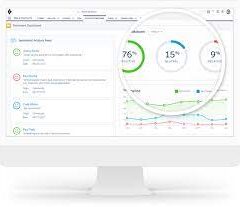A data lake is a centralized repository that stores vast amounts of data, both structured and unstructured, in its native format, enabling organizations to store and analyze diverse data sources for various applications, including analytics, machine learning, and business intelligence.
Here’s a more detailed explanation:
- Centralized Repository: Data lakes serve as a single location for storing data from various sources, including databases, applications, and external sources.
- Raw Data Storage: Unlike traditional data warehouses that require data to be structured and transformed before storage, data lakes store data in its raw, original format.
- Handles Diverse Data: Data lakes can accommodate various data types, including structured data (tables, spreadsheets), semi-structured data (XML, JSON), and unstructured data (images, audio, video).
- Scalability and Flexibility: Data lakes are designed to handle large volumes of data and can scale to accommodate growing data needs.
- Enables Data Analytics: The raw data stored in a data lake can be used for various analytical purposes, including data mining, machine learning, and business intelligence.
- Cost-Effective: Data lakes can be a cost-effective solution for storing and managing large amounts of data compared to traditional data warehouses.
- Data Discovery and Exploration: Data lakes allow users to explore and discover data in its raw form, enabling them to identify patterns and insights that might not be apparent in structured data.
- Data Preparation for Analytics: Data stored in a data lake can be processed and transformed for specific analytical tasks, such as cleaning, filtering, and aggregating data.











